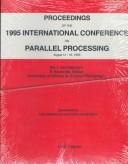| Listing 1 - 5 of 5 |
Sort by
|
Book
ISBN: 9811030383 9811030375 Year: 2017 Publisher: Singapore : Springer Singapore : Imprint: Springer,
Abstract | Keywords | Export | Availability | Bookmark
 Loading...
Loading...Choose an application
- Reference Manager
- EndNote
- RefWorks (Direct export to RefWorks)
This inspiring textbook provides an introduction to wireless technologies for sensors, explores potential use of sensors for numerous applications, and utilizes probability theory and mathematical methods as a means of embedding sensors in system design. It discusses the need for synchronization and underlying limitations, inter-relation between given coverage and connectivity to number of sensors needed, and the use of geometrical distance to determine location of the base station for data collection and explore use of anchor nodes for relative position determination of sensors. The book explores energy conservation, communication using TCP, the need for clustering and data aggregation, and residual energy determination and energy harvesting. It covers key topics of sensor communication like mobile base stations and relay nodes, delay-tolerant sensor networks, and remote sensing and possible applications. The book defines routing methods and do performance evaluation for random and regular sensor topology and covers intrusion detection using sensors. The book focuses on applications such as interaction with actuators, final design with respect to a given application, personal and body-area networks for health-care applications and sensor network as an integral part of IoT. Importance of both coverage and connectivity is examined thoroughly in both randomly deployed sensor networks for defense application and regularly placed sensors for an industrial set up. It goes on to cover security of systems, and strategies for secured communications. The content includes exercises as well as design based project ideas. The comprehensive coverage in the book will make it useful as a text for graduate as well as upper undergraduate courses. The book will also serve well as a course material for professional courses.
Engineering. --- Computer organization. --- Electrical engineering. --- Electronic circuits. --- Circuits and Systems. --- Computer Systems Organization and Communication Networks. --- Communications Engineering, Networks. --- Electron-tube circuits --- Electric engineering --- Organization, Computer --- Construction --- Systems engineering. --- Computer network architectures. --- Telecommunication. --- Electric communication --- Mass communication --- Telecom --- Telecommunication industry --- Telecommunications --- Communication --- Information theory --- Telecommuting --- Architectures, Computer network --- Network architectures, Computer --- Computer architecture --- Engineering systems --- System engineering --- Engineering --- Industrial engineering --- System analysis --- Design and construction --- Embedded computer systems. --- Wireless sensor networks. --- WSNs (Sensor networks) --- Computer networks --- Low voltage systems --- Sensor networks --- Wireless communication systems --- Context-aware computing --- Embedded systems (Computer systems) --- Computer systems --- Architecture Analysis and Design Language --- Electronic digital computers --- Electric circuits --- Electron tubes --- Electronics

ISBN: 0849326192 Year: 1995 Publisher: Boca Raton (Fla.) : CRC press,
Abstract | Keywords | Export | Availability | Bookmark
 Loading...
Loading...Choose an application
- Reference Manager
- EndNote
- RefWorks (Direct export to RefWorks)
Digital
ISBN: 9789811030383 Year: 2017 Publisher: Singapore Springer Singapore, Imprint: Springer
Abstract | Keywords | Export | Availability | Bookmark
 Loading...
Loading...Choose an application
- Reference Manager
- EndNote
- RefWorks (Direct export to RefWorks)
This inspiring textbook provides an introduction to wireless technologies for sensors, explores potential use of sensors for numerous applications, and utilizes probability theory and mathematical methods as a means of embedding sensors in system design. It discusses the need for synchronization and underlying limitations, inter-relation between given coverage and connectivity to number of sensors needed, and the use of geometrical distance to determine location of the base station for data collection and explore use of anchor nodes for relative position determination of sensors. The book explores energy conservation, communication using TCP, the need for clustering and data aggregation, and residual energy determination and energy harvesting. It covers key topics of sensor communication like mobile base stations and relay nodes, delay-tolerant sensor networks, and remote sensing and possible applications. The book defines routing methods and do performance evaluation for random and regular sensor topology and covers intrusion detection using sensors. The book focuses on applications such as interaction with actuators, final design with respect to a given application, personal and body-area networks for health-care applications and sensor network as an integral part of IoT. Importance of both coverage and connectivity is examined thoroughly in both randomly deployed sensor networks for defense application and regularly placed sensors for an industrial set up. It goes on to cover security of systems, and strategies for secured communications. The content includes exercises as well as design based project ideas. The comprehensive coverage in the book will make it useful as a text for graduate as well as upper undergraduate courses. The book will also serve well as a course material for professional courses.
Telecommunication technology --- Electrical engineering --- Applied physical engineering --- Mass communications --- Computer architecture. Operating systems --- draadloze computernetwerken --- IoT (Internet of Things) --- mobiele netwerken --- remote sensing --- computerbesturingssystemen --- tekstverwerking --- OS (operating system) --- ingenieurswetenschappen --- computernetwerken --- elektrische circuits --- communicatietechnologie
Book
ISBN: 0849324963 Year: 1994 Publisher: Boca Raton (Fla.) : CRC press,
Abstract | Keywords | Export | Availability | Bookmark
 Loading...
Loading...Choose an application
- Reference Manager
- EndNote
- RefWorks (Direct export to RefWorks)
Book
Year: 1984 Publisher: Piscataway : IEEE service center,
Abstract | Keywords | Export | Availability | Bookmark
 Loading...
Loading...Choose an application
- Reference Manager
- EndNote
- RefWorks (Direct export to RefWorks)
| Listing 1 - 5 of 5 |
Sort by
|

 Search
Search Feedback
Feedback About UniCat
About UniCat  Help
Help News
News